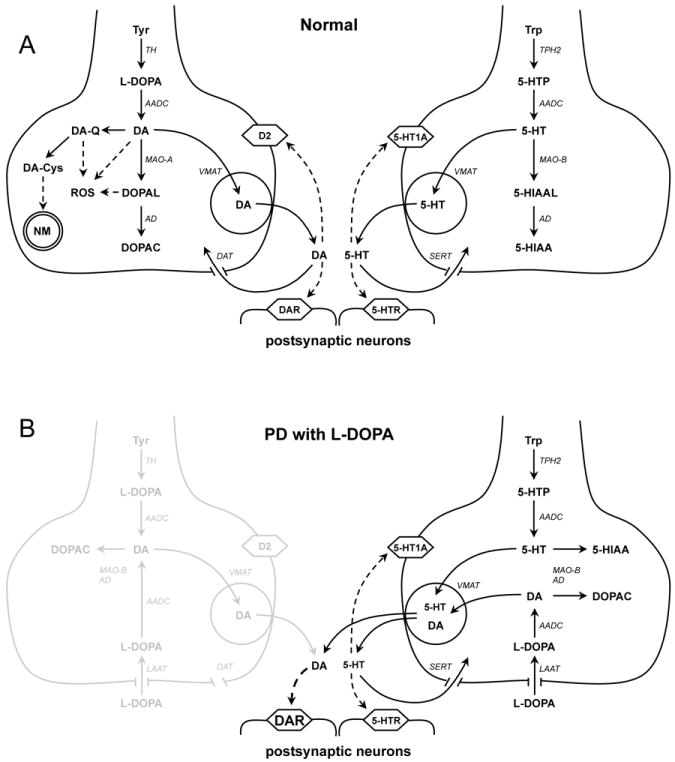Figure 1.

DA and 5-HT homeostasis in normal conditions (A) and Parkinson’s disease (B). (A) Schematics of DA (left) and 5-HT (right) synthesis, degradation and neurotransmission. There are substantial similarities between DA and 5-HT metabolism, including the presence of AADC, MAO and AD in the cytosol and VMAT2 on the synaptic vesicle membrane. Note that some metabolic pathways, such as neuromelanin synthesis, are more prominent in the cell bodies than in the terminals of DA neurons. (B) Exogenous L-DOPA can be taken up by the L-amino acid transporter (LAAT) and metabolized to DA in both types of neurons. In a healthy brain, very high levels of L-DOPA are required to induce dyskinesia 114. In earlier stages of PD, DA release from surviving dopaminergic terminals is augmented by exogenous L-DOPA, which provides the therapeutic benefits of the drug, while decreased DAT activity provides a larger sphere of influence. It may be that at high doses, the system is flooded with DA released from 5-HT neurons, triggering dyskinesias. A dose of L-DOPA that gives symptomatic relief without causing motor side effects provides a “therapeutic window” of DA replacement therapy. In later stages of PD, severe loss of dopaminergic terminals reduces the therapeutic window and striatal DA levels become less dependent on the activity of DA neurons and more on the availability of exogenous L-DOPA.
